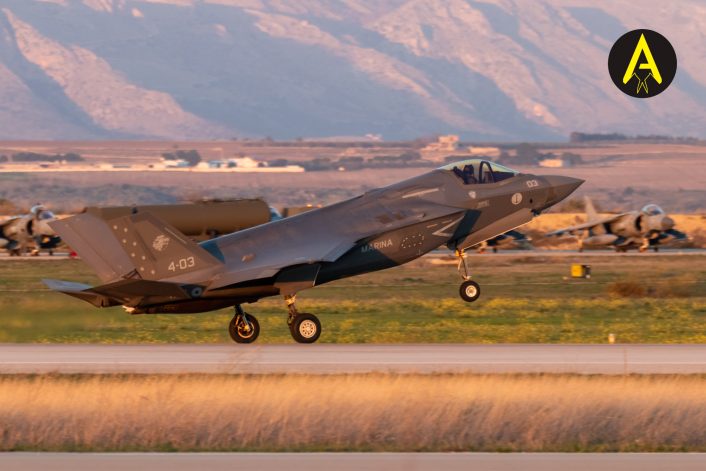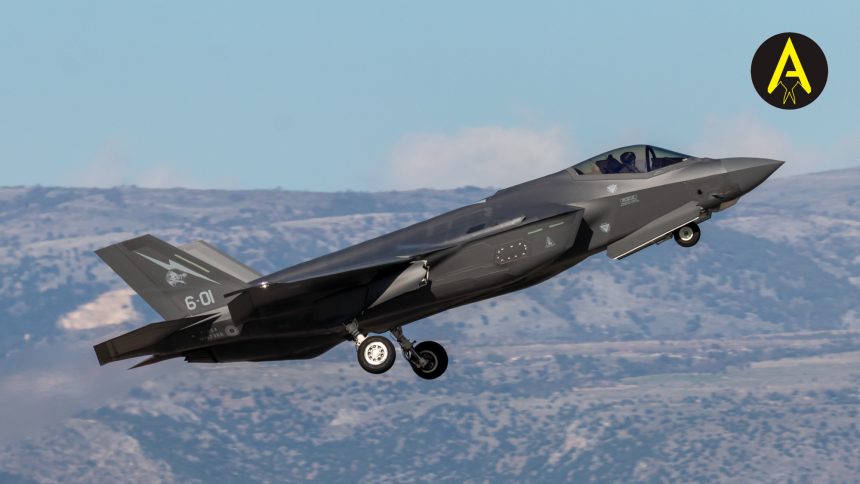For two weeks, Italy hosted 4th and 5th gen assets, joint capabilities, and naval components in a training scenario that reflects today’s operational challenges.
The Italian Air Force announced the completion of Exercise Falcon Strike 2025 at Amendola Air Base, home of the 32° Stormo and one of Europe’s main hubs for 5th generation fighter operations. Running from Nov. 3 to 14, 2025, the exercise is the largest and most complex training event organized by the Italian Air Force this year.
FS 2025, now at the third edition, brought together more than 1,000 personnel and over 50 aircraft from Italy, the United States, the United Kingdom, France and Greece. The assets involved in exercise flew about 460 sorties and over 1,000 hours.
The Chief of Staff of the Italian Air Force, Lt. Gen. Antonio Conserva, underscored the importance of the exercise, emphasizing how it reflects the complexity of current scenarios: “We operate in scenarios where we face air, land, naval, and cyber threats, as well as a threat that we might even define as space,” Conserva explained. “Our crews train to address this complexity and the resulting technological challenges. With Falcon Strike 2025, we have achieved a further level of operational capability and readiness for our assets.”
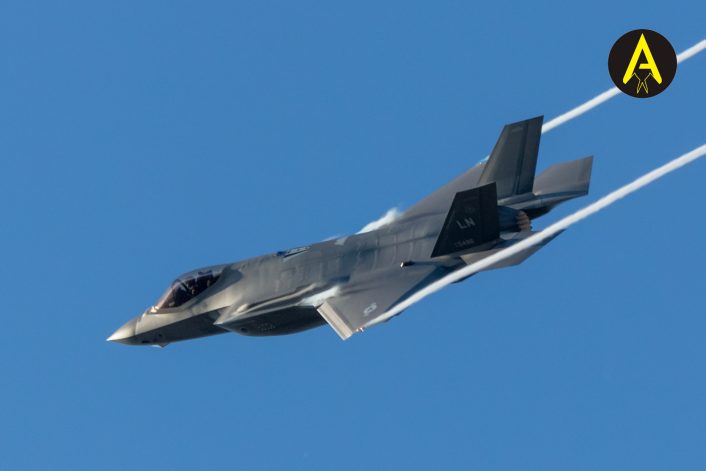
His comments were echoed by the Commander of the Air Fleet Command, Lt. Gen. Silvano Frigerio, who also emphasized the value of interoperability: “We must strive for maximum integration between fourth and fifth generation aircraft and maximum interoperability between crews from different nations,” said Frigerio. “In the Atlantic Alliance, we have been doing this for over 70 years: the challenge is to bring these capabilities to the highest level.”
The Aviationist was at Amendola for the Media Day and the Spotters’ Day on Nov. 5 and 6, respectively, observing flight operations, maintenance demonstrations and the multinational line-up of fourth- and fifth-generation aircraft taking part in this year’s edition of the exercise.
A Multinational Line-Up
As confirmed by the Italian Air Force, the 2025 edition included aircraft and personnel from five nations. Here are the assets involved:
Italian Air Force:
- F-35A/B of 32° Stormo and 6° Stormo, operating from Amendola;
- F-2000A of 4° Stormo and 36° Stormo, operating from Grosseto and Gioia del Colle, respectively;
- Tornado of 6° Stormo, operating from Ghedi;
- T-346A of 61° Stormo, operating from Decimomannu;
- MQ-9 of 32° Stormo, operating from Amendola;
- KC-767, E-550 CAEW and SPYDR of 14° Stormo, operating from Pratica di Mare;
- KC-130J and C-27J of 46^ Brigata Aerea, operating from Pisa;
- P-72 of 41° Stormo, operating from Sigonella;
- MAADS (SYRIUS) from 2° Stormo;
Italian Navy:
- F-35B and AV-8B+ of GRUPAER, operating from Amendola;

U.S. Air Force:
- F-35 of 48th Fighter Wing, operating from Amendola;
- KC-135 of 100th Air Refueling Wing, operating from Sigonella;
Royal Air Force and Royal Navy:
- F-35B and Merlin helicopters, operating from HMS Prince of Wales;
- Voyager tanker, operating from Brindisi;
Exercise Falcon Strike 25 continues this week.
This major training deployment strengthens NATO collaboration and tests Agile Combat Employment with our allies across Europe.
#FlyandFight #WeAreNATO@ItalianAirForce@usairforce@Armee_de_lair@HAFspokesperson@thef35@NATO pic.twitter.com/ePxm9wC75O
— Royal Air Force (@RoyalAirForce) November 12, 2025
French Air and Space Force:
- Rafale C of Base Aérienne Orange-Caritat (BA115), operating from Amendola;
- E-3F AWACS operating from Base Aérienne 702 Avord (BA702);
- A330 MRTT operating from Base Aérienne 125 d’Istres (BA 125);
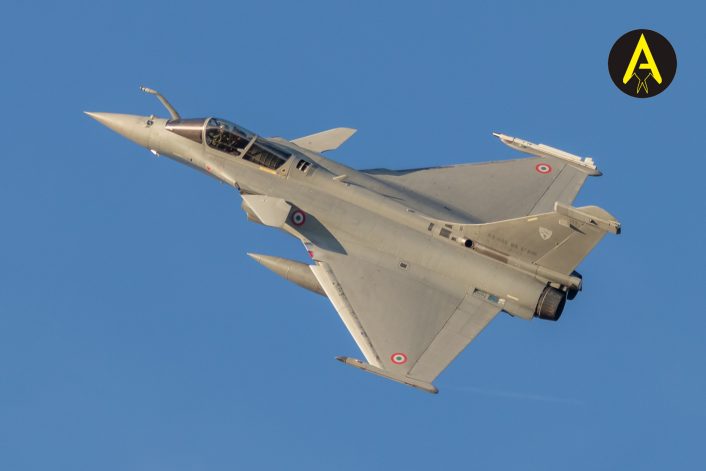
Hellenic Air Force:
- F-16 of 115th Fighter Wing, operating from Amendola.
The F-2000 Typhoons and T-346s were also employed as part of the Red Air, supported by tankers and AEW&C assets. While not explicitly stated, it is possible that F-35s also joined the Reds to better simulate operations in environments with the most recent threats.
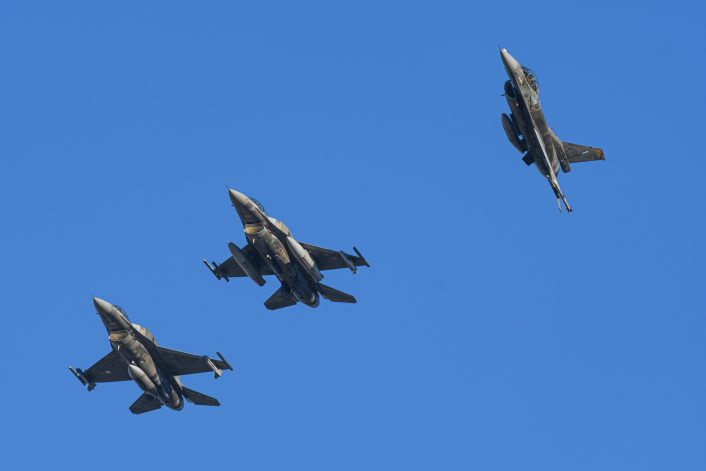
Practicing on how to operate with allied 5th gen aircraft and on how to counter adversary 5th gen combat aircraft is an objective shared also by the better known Red Flag exercise, which integrated for the first time adversary F-35 assigned to the 65th Aggressor Squadron during the 22-3 edition. Moreover, in the 2022 edition, the DIREX (Director of the Exercise) confirmed to us that Falcon Strike is very similar to Red Flag and the foreign militaries that were at Amendola even called it an “European Red Flag.”
While it could appear uncommon, this is not the first time the T-346 Lead-In Fighter Trainer is used as an Aggressor during a high-intensity, multinational exercise. In fact, thanks to its great performance, ability to simulate the flight characteristics of other aircraft and to replicate a wide array of sensors and weapons, the jet is perfect to play the “Bandit” role.
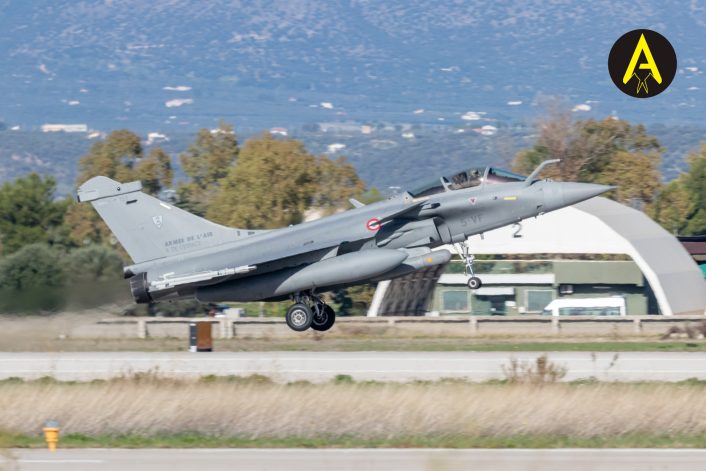
A notable feature of this edition is the presence of assets from both the Italian Navy and the Royal Navy, further expanding the maritime dimension of the multi-domain exercise. The involvement of the British Carrier Strike Group in Falcon Strike 2025 was planned as part of Operation HIGHMAST, the UK’s eight-month global deployment across the Mediterranean, Middle East and Indo-Pacific.
RAF Air and Space Commander Air Marshal Allan Marshall highlighted how the exercise “strengthens interoperability, deepens mutual understanding and ensures that both nations remain ready to deliver decisive air power whenever and wherever it’s needed.”
F-35B’s✈️On deck. On target. On task.
From Ex #FalconStrike25 🇮🇹,to the deck of @HMSPWLS, UK Lightning jets are proving what teamwork looks like.🤝
With @NATO allies, our F-35Bs are sharpening warfighting skills & showing how together we keep @COMUKCSG safe🛡️#StrongerTogether pic.twitter.com/9iX3u1lz0I
— Defence Operations 🇬🇧 (@DefenceOps) November 13, 2025
Strengthening 5th Generation Integration in Complex Scenarios
According to the Italian Air Force, Falcon Strike 2025 is designed to test and refine multinational tactics in high-intensity, peer-opponent scenarios. These included anti-access environments, dynamic targeting, advanced command-and-control chains and multi-domain effects, as well as some of the focuses of modern scenarios such as Agile Combat Employment (ACE) and drone and cruise missile defense.
Large areas of airspace over the Ionian and Tyrrhenian Seas were dedicated to the exercise, as well as other assets in Sardinia. In fact, the scenario made use of Live, Virtual and Constructive (LVC) simulation, primarily hosted at the Poligono Sperimentale e di Addestramento Interforze di Salto di Quirra (PISQ – Joint Test and Training Range) in Sardinia, where the Aeronautica Militare recreates an entire virtual battlespace populated with advanced threats.
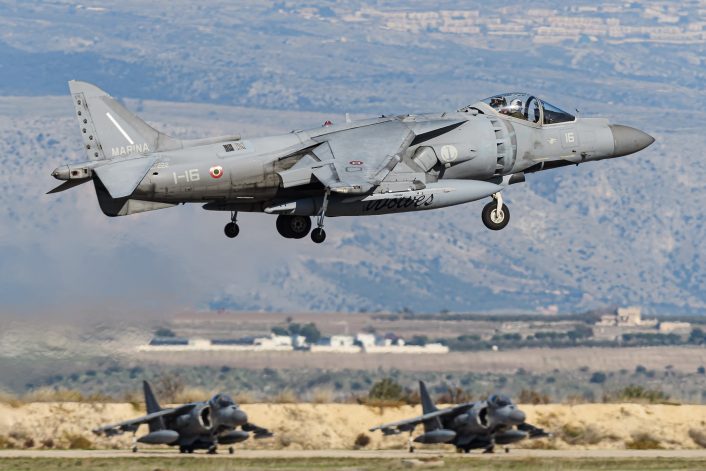
The range employed simulated and real threat emitters, Electronic Warfare systems and tactical vehicles to recreate a dynamic and complex battlefield. “Smokey SAM” systems further improved the realism, simulating Man-Portable Air-Defense Systems (MANPADS).
The service defined the exercise as “a leap into the future,” emphasizing its role in validating fifth-generation employment concepts and enhancing interoperability across NATO fleets thanks to the sharing of procedures, tools, and expertise. NATO’s Allied Air Command (AIRCOM) similarly described Falcon Strike 2025 as a key contributor to the Alliance’s Deterrence and Defense posture, strengthening standardization and readiness across participating air forces.
Allied Air Forces are in 🇮🇹 for #FalconStrike2025 ✈️
More than 1,000 personnel & 50+ aircraft from 🇫🇷🇬🇷🇮🇹🇬🇧🇺🇸 train together.
Hosted by 🇮🇹 @ItalianAirForce, the exercise integrates 4th & 5th gen aircraft, ACE & LVC training
🔗Read more: https://t.co/ga9EtU7USq pic.twitter.com/CXyURcdxW3
— NATO Air Command (@NATO_AIRCOM) November 7, 2025
The two-week event is structured around daily “vignettes” that increase in complexity. Specifically, the first week focused on 4th and 5th gen integration, pairing aircraft such as the Eurofighter, Rafale, Tornado and F-16 with F-35s. The second week shifted the focus to 5th gen-only missions, allowing Lightning II operators to train in the high-end roles for which the aircraft was designed.
In the 2022 edition of the exercise, some of the F-35s also flew without the usual RCS (Radar Cross Section) enhancers/radar reflectors normally installed during peacetime and training operations. The aircraft were flying this way with their lowest radar “signature”, taking full advantage of their low-observable capabilities.
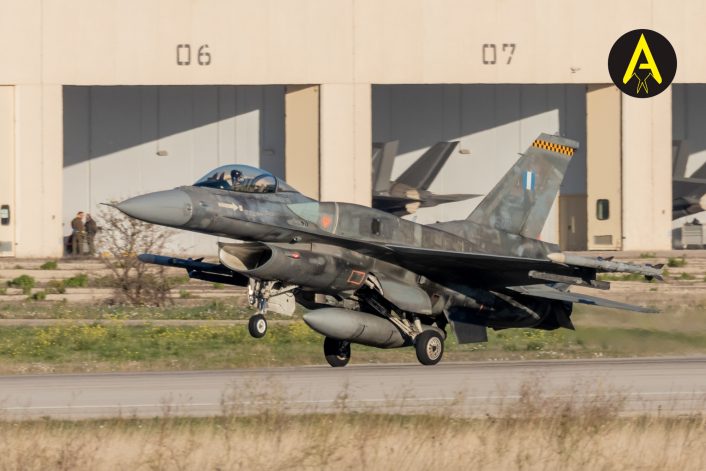
This choice was in line with a scenario that simulated the first days of war, with NATO responding to a crisis that quickly transformed in an armed conflict. While during both the Media and Spotters’ Days the F-35 operated with the RCS enhancers installed, it is possible they “unlocked” the full low-observable capabilities during the second week of the exercise.
The exercise includes large Composite Air Operations (COMAO) in the Main Wave, as well as “Shadow Wave” packages for other training needs. Advanced training sequences involved cruise missile scenarios, SEAD (Suppression of Enemy Air Defenses), ISR (Intelligence, Surveillance and Reconnaissance) and tactical command-and-control.
Sous conduite du @CDAOAofficiel, du 03 au 09 novembre, les #Rafale de la 5e escadre de chasse ont pris part à Falcon Strike 25🇮🇹.
Un exercice #OTAN visant à renforcer la coopération et l’interopérabilité entre avions de dernière génération. ✈️➡️https://t.co/HSeT0I7GCr pic.twitter.com/CJcTTw8I1p
— Armée de l’Air et de l’Espace (@Armee_de_lair) November 12, 2025
Notably, the cruise missile scenarios involved the employment of Mirach 100/5 target drones, with the aircraft simulating the interception and engagement. A corridor was established for the operations of the Mirach, stretching from land towards the sea, likely to simulate the launch of cruise missiles against naval units.
Training for the Challenges of Tomorrow
Central to Falcon Strike 2025 was the focus on 5th generation aircraft training. The Italian Air Force describes the F-35’s role as a “deterrent tool” and a core element of national and NATO air power. The distributed sensors, data fusion and secure datalinks of the Lightning II allow it to operate as a battlefield information node, sharing real-time data with fourth-generation platforms and coordinating complex strike or defensive packages.
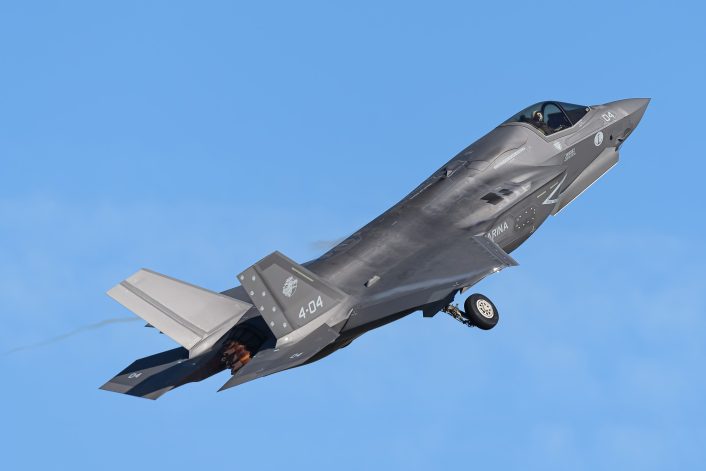
These capabilities are used extensively throughout the exercise. The Aeronautica Militare notes that crews must be able to take rapid decisions in high-threat environments, leveraging advanced command-and-control networks such as the E-550 CAEW (Conformal Airborne Early Warning) and integrated tactical datalinks across the coalition.
Maintenance activities also play a key role. During the Media Day, a live demonstration of F-35 maintenance and refueling procedures showcased the level of standardization and cooperation required for sustainment of the 5th gen fleet across NATO. Joint and cross maintenance activities between Italian and foreign technicians were scheduled throughout the exercise.
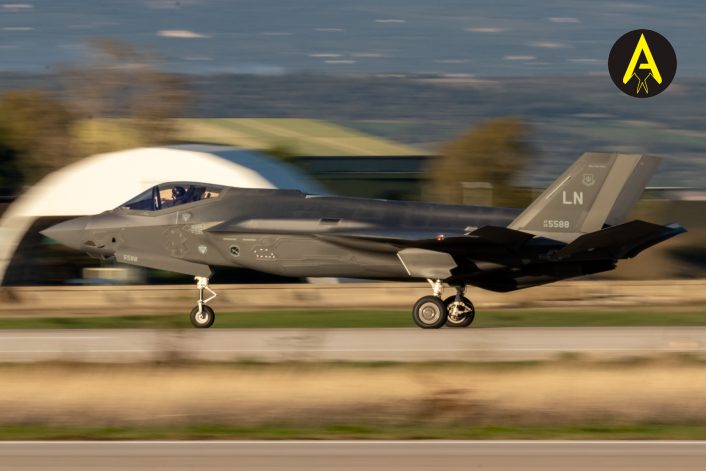
Another significant activity was the Air Landed Aircraft Refueling Point (ALARP) event conducted at the 36th Wing in Gioia del Colle, where Italian and British personnel conducted the hot pit refueling of two F-35B aircraft, before rapidly taking off to continue their operational mission. Both the hot pit refueling and cross maintenance allowed to ensure operational continuity and the response capability in high-intensity scenarios.
The Italian Air Force highlighted how this was useful to test the Agile Combat Employment (ACE) concept, moving from a base and continue to operate from geographically dispersed locations. The inclusion of ACE was also a feature of the previous editions of the exercise, with FS 2021 featuring austere runway operations and hot-pit refueling on Pantelleria Island and FS 2022 including cross-maintenance operations.
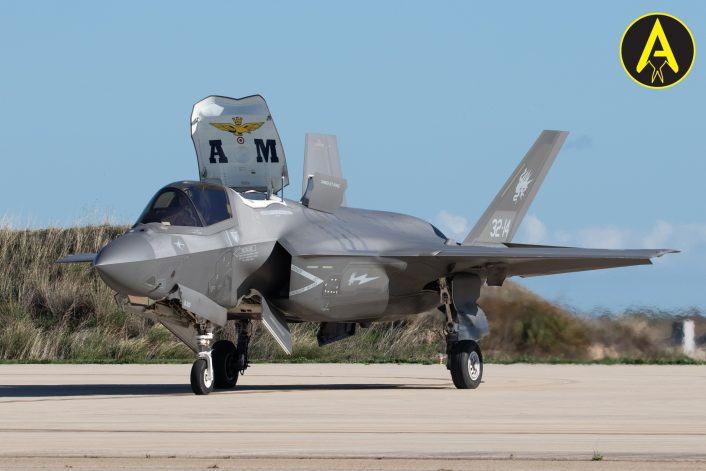
The service also underscored the importance of such events for maintaining readiness and resilience, especially given the increasing operational commitments at home and abroad. As 32° Stormo Commander Col. Roberto Losengo explained, “training with allies means responding together to contemporary challenges and threats, ensuring readiness, resilience and deterrence.”
